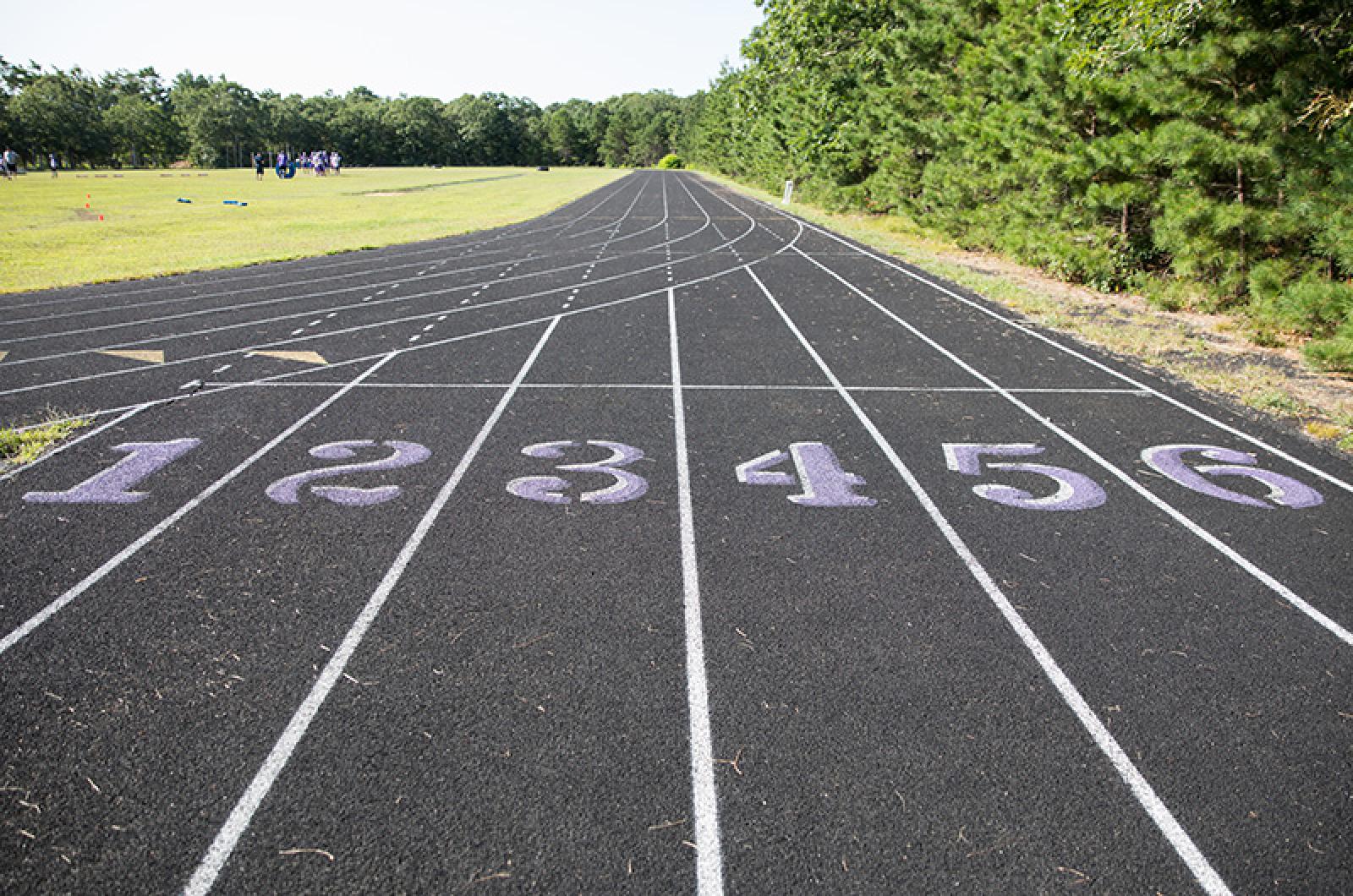The Martha’s Vineyard Commission voted 10-6 to approve the regional high school athletic field project at a dramatic meeting Thursday night, capping a long-running and often acrimonious debate over synthetic turf fields that began a half-decade ago.
“We were created to protect the unique values of this place, that’s exactly why we’re here,” said commissioner Doug Sederholm at the end of a three-hour deliberation held over Zoom. “On balance, I think the synthetic turf field is probably the way to go.”
The approval comes with 11 conditions, but one condition to require all-grass fields that ultimately failed became a turning point later in the meeting.
Under review by the commission as a development of regional impact (DRI), phase one of the roughly $11 million project to overhaul the high school athletic fields has been the subject of a marathon public hearing process that began in January.
The current project began in 2016 and became fraught after separate groups proposed dueling plans for the athletic facility — one with grass fields, one with turf.
The high school committee eventually settled on a full-scale athletic complex upgrade that includes a multi-purpose synthetic turf field, five natural grass fields, a new 400-meter track, a 700-seat grandstand, a 5,000-square-foot field house, and concessions and bathroom facilities.
The plan was designed by Huntress Associates of Andover. Vineyard schools superintendent Matt D’Andrea has said he plans to privately fund raise to pay for the project. Phase one will cost roughly $7 million.
The exhaustive commission review saw extensive testimony and some 345 letters, including 20 from Island environmental groups opposing the turf plan. Scientists clashed over the prevalence of poly-syllabic chemicals in the turf infill, and parents weighed the environmental and aesthetic costs of plastic with the prospect of a state-of-the-art athletic facility for students.
On Thursday night commissioners grappled with similar questions as they weighed the benefits and detriments of the project.
In an added twist, a condition written by commissioner Ben Robinson that would have required all-grass fields for the project became a bellwether for the vote, as chairman Joan Malkin gave each commissioner a chance to speak.
“We have a chance to set policy,” said Mr. Robinson. “We have to give ourselves the opportunity to improve the student athlete experience through grass because plastic is such a problem, and because we have this alternative. We have to make that choice, towards all grass.”
Other commissioners agreed, acknowledging the benefits of artificial turf but concluding that the environmental impact was too great.
“I’ve been thinking about this hard,” commissioner Linda Sibley said. “The benefit of the synthetic field is clearly that you have a predictable, reliable, surface at all times. The detriment is clearly environmental. And after considerable struggle, I decided that we do need to set an example environmentally, and that we can use this as an educational opportunity for the kids, explaining to them the benefit that they get, that the whole Island gets, and the whole world gets by minimizing plastic.”
But as the condition gained momentum with some commissioners, others were opposed, either voicing wholehearted approval for the synthetic field or expressing procedural concerns over the proposed amendment.
“There’s a time for policy and that time is when you move through a public process,” said commissioner Brian Packish. “I don’t think that this is the right time to attempt to make a statement of creating policy and, pun intended, move the goalposts for these applicants.”
Commissioner Jim Vercruysse stated his case simply. “The applicant has made it clear that they cannot achieve their goal without this field. And to me if it gets one kid out there to that wouldn’t otherwise be out there because of weather conditions or abilities, one way or another, it’s a win,” he said.
After more than an hour of discussion and comment from all 16 commissioners, the vote on the condition failed in an 8-8 tie.
Commissioners then moved to vote on the entire project.
Commission chairman Joan Malkin was among the board members who voted for the all-grass condition and held steadfast. Commissioner Jeff Agnoli, also an all-grass proponent, stood his ground as well.
“As a commission, we should not be timid about a denial. Many parts of the plan are in place already, we need not worry about how many years will go by,” Mr. Agnoli said. “I would like us to be, in the face of such a large decision, courageous enough to make the right one.”
But this time the vote split differently. Commissioner Christina Brown and Ms. Sibley had voted yes on the all-grass condition, but in the end they voted in favor of the overall project with the turf field, putting a definitive stamp on a process and project that had been anything but for nearly half a decade.
“I just want to say I ended up voting yes because I think overall the necessity of this project for the kids is too great for me to vote no,” said Ms. Sibley in final remarks. “Most of you don’t know this but I was once the chair of the high school committee and when I was there, we were having a fiscal crisis and someone suggested that one way to save money would be the cut athletics. And I said, literally over my dead body.”
The 11 conditions include one requiring the high school to provide information about disposing of the artificial turn field at the end of its life if it cannot be recycled, another requiring a plan to track and report injuries on the turf field, and others pertaining to lighting, landscaping and building materials for the field house.
The final roll call vote was as follows: Clarence (Trip) Barnes 3rd, Ernie Thomas, Jim Vercruysse, Brian Packish, Christina Brown, Fred Hancock, Doug Sederholm, Josh Goldstein, Linda Sibley and Ted Rosbeck voted yes. Commissioners Jeff Agnoli, Jay Grossman, Christine Todd, Kathy Newman, Ben Robinson and Joan Malkin voted no.






Comments (17)
Comments
Comment policy »